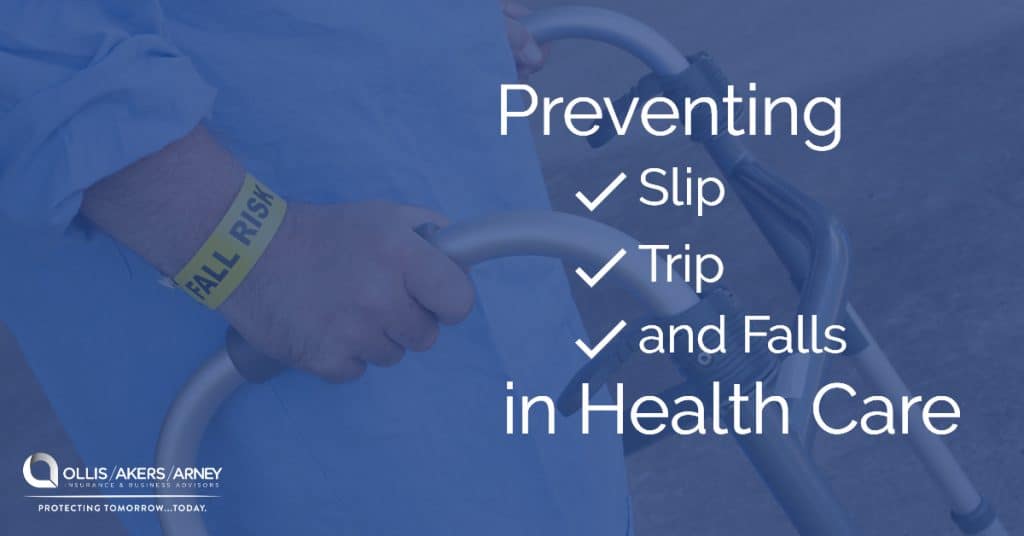Slips, trips, and falls (STFs) are a significant hazard for health care workers that can result in serious injury. In fact, according to the U.S. Bureau of Labor Statistics, STFs are the second-leading cause of serious injury among hospital workers. There are a host of factors that lead to STFs in the health care industry including wet floors, loose equipment and cords, poor lighting, improper footwear, improper drainage and adverse weather conditions.
OSHA Requirements
- STFs are a significant enough hazard that OSHA requires health care employers to take a number of steps to mitigate their risk. OSHA requires employers to:
- Keep floors clean and dry. In addition to being a slip hazard, wet surfaces promote the growth of mold, fungi and bacteria, which can cause infections.
- Provide warning signs for wet floor areas.
- Maintain drainage and provide false floors, platforms, mats or other dry standing places, or appropriate waterproof footgear where wet processes are used.
- Keep exits free from obstruction.
- Keep aisles and passageways clear and in good repair, with no obstruction across or in aisles that could create a hazard.
Additional Strategies
In addition to complying with OSHA’s requirements, employers can implement the following strategies:
- Require employees to wear the appropriate footwear required for specific job duties (e.g., nonslip, closed-toe or water-resistant shoes).
- Maintain good housekeeping practices. A clean facility is your first line of defense against STFs.
- Communicate potential risks and solutions of STFs to workers and other affected workplace parties in a timely manner.
- Require that all spills are reported and cleaned up immediately.
- Use nonskid waxes and surfaces coated with grit to create nonslip surfaces in slippery area.
- Require employees to use properly maintained ladders to reach items instead of stools, chairs or boxes as substitutes for ladders.
- Maintain a program to promptly remove ice and snow from parking lots, garages and sidewalks.
- Verify that all areas being utilized by employees are well-lit and that lightbulbs are being replaced regularly.
Discuss these tips with your employees to help reduce injuries caused by STFs.
If you have more questions or to learn more, contact Ollis/Akers/Arney Insurance & Business Advisors today.


